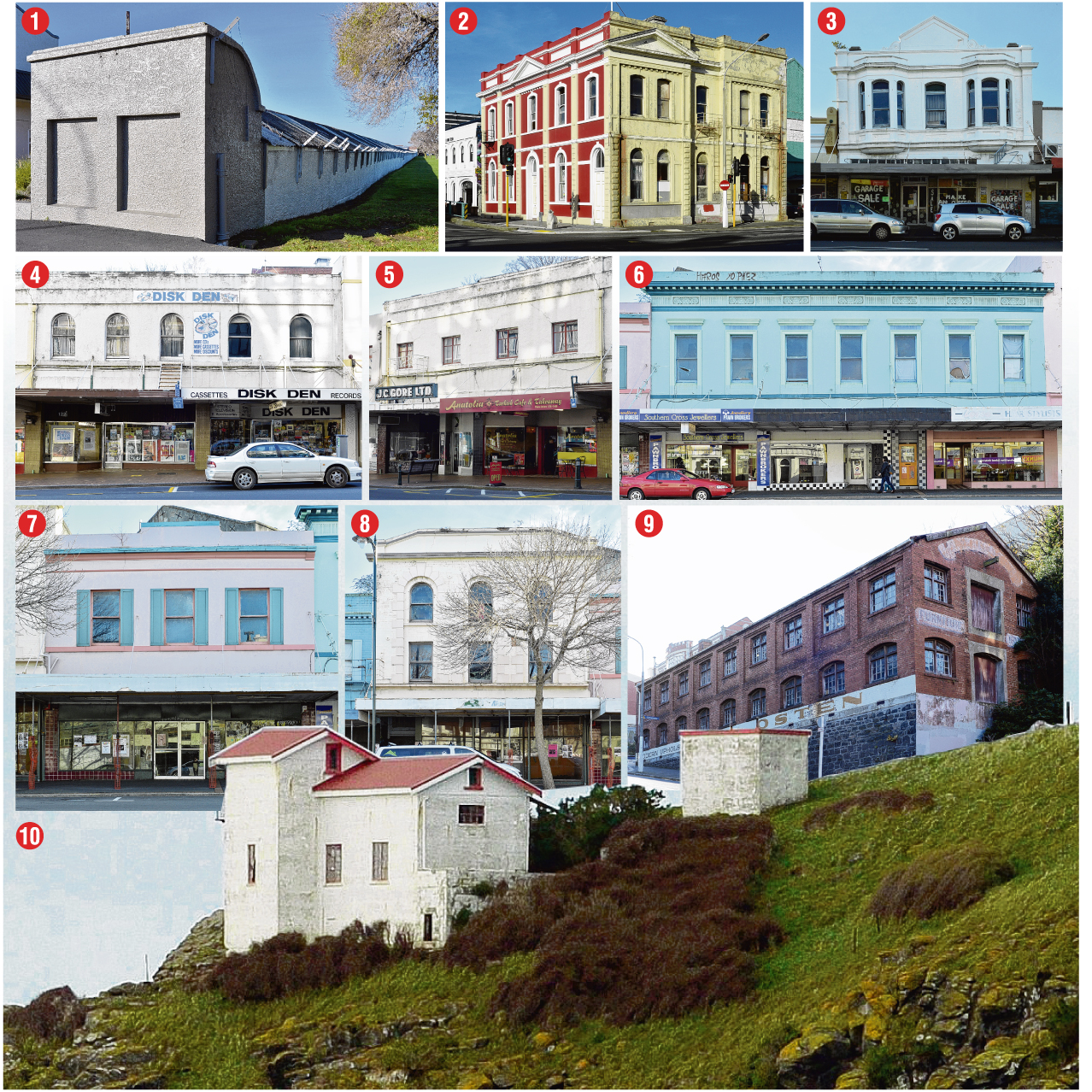
In its new heritage monitoring programme the Dunedin City Council has identified the buildings most at risk of being lost because of poor condition or lack of use.
There were 774 heritage buildings listed in the council's second generation plan assessed by staff and 24 were found to be at risk.
Of those, 11 appeared to have no restoration work under way or planned, so have been given a negative designation.

The list included buildings such as the Taiaroa Head Fog House, the Donaghy's Rope Walk building in South Dunedin and the former Otago Education Board Offices on the corner of Jetty and Crawford Sts.
Council heritage planner Dan Windwood said the assessment was not a judgement but rather a way for the council to prioritise buildings and owners which might need more assistance.
Some buildings listed at risk, such as Cargill's Castle, were physically in a bad state but had a plan to revitalise them which put them at less of a risk than some others, he said.
Simple interventions such as repainting peeling timber work and render would help protect the buildings and improve their appearance. Assistance could be granted through the Dunedin Heritage Fund.
Mr Windwood hoped the first list would be used as a base on which to judge any progress owners had made in improving their buildings.
Improvements made during the upgrade of the central city in and around George St and Princes St included in the 10-year plan could act as a trigger to support improvements and take advantage of the increased attractiveness of the area, he said.
Dunedin Heritage Fund chairman Cr David Benson Pope said as well as incentives for property owners there was a need for penalties for those who continued to neglect their buildings.
Cr Benson-Pope said there would be work through the rates advisory working group to investigate ways the council could charge more to owners who continued to neglect their buildings.
''I'm keen to come up with some sort of tool in the rating mechanism that will encourage these people who are letting us down to perform a bit better.''
But two heritage property owners who spoke to the Otago Daily Times yesterday said any penalty would do the opposite of what Cr Benson-Pope intended.
Developer Roger Bray, who owns the former Otago Education Board Offices, said any penalty would mean more properties being demolished or left to deteriorate.
''It's a commercial proposition and there needs to be a commercial incentive for developers to take on properties like ours and if they think they might get hit with a larger rates bill they aren't going to do it.''
Mr Bray said work continued on his building and he was still actively looking for buyers.
''One or two sales and away we'll go and are making good progress on the earthquake-strengthening too.''
Another at-risk property owner, Christchurch developer Christian Jordan, said his property in Manor Pl needed earthquake-strengthening. A higher rates bill would mean developing the property would be less viable.
He bought the property after a fire in 2001 and said since then he had almost no contact from the council.
Developers did not buy properties to lose money and when market conditions were favourable they would start to upgrade them, Mr Jordan said.
Comments
Bulldoze the lot problem solved,this council get's a bit carried away with these "heritage"buildings most of them are completely stuffed.
Most of them are not completely stuffed, but completely neglected. Some have no basic maintenance that every building has to have. Our heritage buildings are why we have many visitors to Dunedin. They are unique and even studied on university courses. Our grandchildren will not thank us for any bulldozing.
I think the council is getting carried away because 1/2 of them on council were children when they were built, the other 1/2 are yes sir no sir follow the leader type people. Bulldoze them. I wonder why Sammies was not pictured,
Developers are land banking good sites. Some of these buildings are an eye sore (cracked brick and stucco) and if they are a danger to the public passing beside them then they should be pulled down. Have a similar facade/type rebuild order that must be completed by x years of demolition.
Also, most of the 'heritage' buildings shown above are not worth such a designation as they are 'common as chips'. May be a refocus on the top 2-300 hundred- not 774- obviously another trigger happy DCC committee with lots of time and money paid by ratepayers.
They are an eyesore now but that's what this is all about. Restoring them back to the buildings they were- and which there are few of in NZ, especially after Christchurch's losses. DCC are aware that international and national tourists visit Dunedin to see our heritage buildings. Many live in polluted high rise cities, so let's retain and enhance our point of difference.
Yes they are point of difference from a tourist point of view- the well built ones with blue stones, good art design etc are worth saving- the facades- but most 'heritage' one have simple dangerous cracking facades that would extensive damage and loss of life if a Christchurch type of earthquake struck. The rear and centre of virtually all these buildings are dilapidated.
I don't think scarcity of architectural style is the criteria of heritage. It is the built environment.
"Some buildings listed at risk, such as Cargill's Castle, were physically in a bad state but had a plan to revitalise them which put them at less of a risk than some others, he said".
Nothing has been done to Cargill's Castle since the trust purchased it many years ago, I believe the trust are practicing demolition by neglect and will sell the land for a tidy profit once the castle falls down.
It needs to be taken from the trust and actually rebuilt instead of being left to collapse.
I wish that these building owners would just sell, or be forced to sell, the buildings as a lot of them a clearly either land banking or going down the path of demolition by neglect.
I think fines and increased rates or something are a great idea, but only after they've met with the owner/s and discussed what their plans are.
At the very least they should all be forced to earthquake strengthen the buildings and tidy up the visible facade.
If if they can't afford to do that, then sell the building to someone who can.
And i also believe Cargills Castle is purposely being neglected, as they aren't making a big song and dance about it to raise funds or to hurry up the consent etc processes. It'll fall down one day and then suddenly two or three houses will be built there instead. There's a lot of land banking up in Highgrove, St Clair, where the castle is. Just cruise up and take a look - sections have been empty for years, which is surely hurting the land value of the houses that are there already....
Are some of these buildings worth saving?
The owners are being realistic about cost.
It cost's money to earthquake strengthen a building built in the late 1800's, Just look at picture 3, it's foundations have slumped, any attempt to fix that would be prohibitive.
Paint and plaster are not going to fix any underlying issues with the building's, you have to look at why the plaster is cracking or the paint is peeling off, the paint could be lead based, or water is getting in behind the paint, or the foundations have moved cracking the wall.
These developers need to start from scratch, this way they can guarantee the safety of the building.
There is a picture missing, the Cadbury's building!












